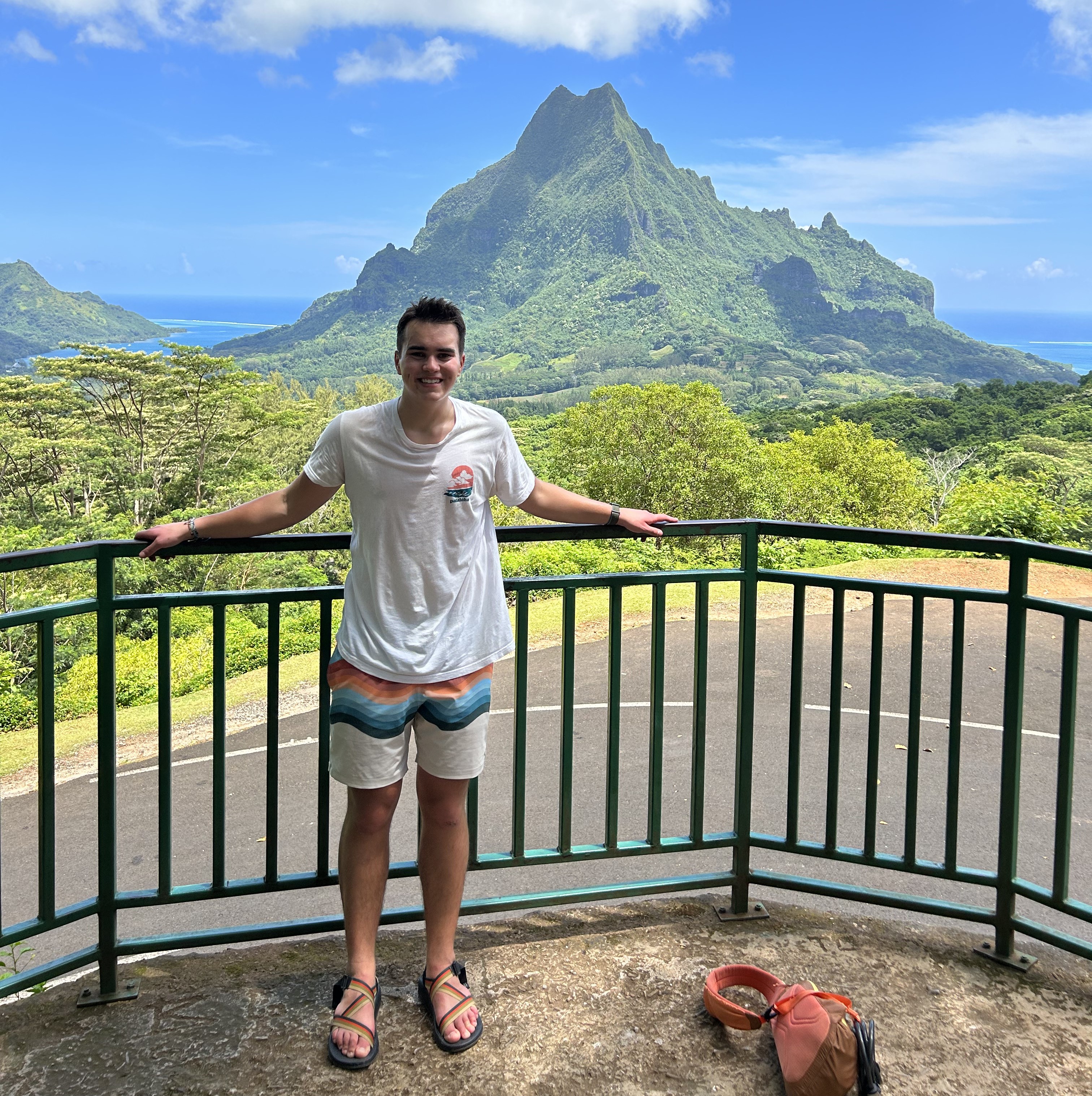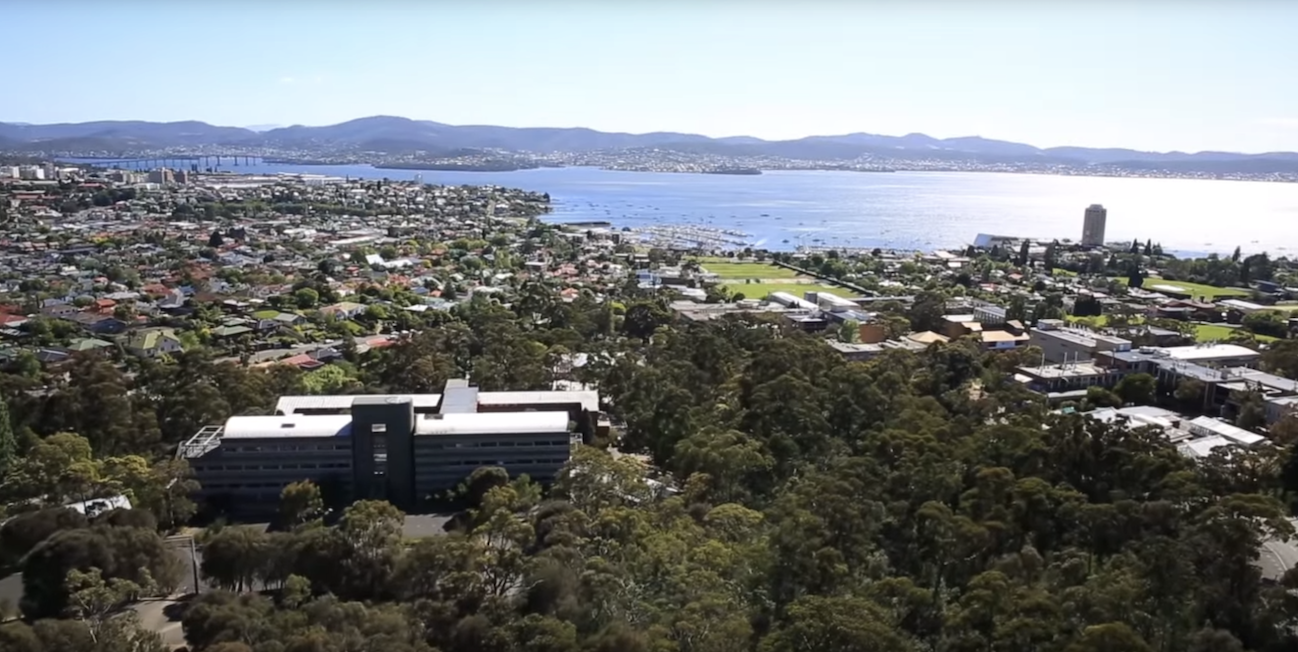Australia: University of Tasmania
Tasmania is an island located off the southern tip of Australia and is a great blend of wilderness and city life. Hobart is the capital of Tasmania and is on the south side of the island.
The university is about a five-minute drive south of the city center, located between Mount Wellington and the Derwent River. The campus is close to shops, transport, accommodation, and bushland. It is only five-minute walk to class or a five-minute walk to the supermarket.
Hobart is a quietly buzzing city with a rich culture and numerous things to see and do. Mount Wellington, secluded bushland, waterfront scenery are just a few of the attractions near the city.
Its population of 200,000 supports a thriving city filled with theatres, galleries, restaurants, and a gorgeous waterfront. The whole island has a population of about 500,000.
The University of Tasmania is a comprehensive university, so academically it aligns really well with UNI. Today about 30,000 students study at the University of Tasmania, with international students from 147 countries.

Dates & Deadlines
Term: Spring 2026
App Deadline: October 1st, 2025
Program Dates: February - June
Spring 2026 applications are now open. Students can click the link below to schedule a meeting to go over important details about this program and begin the application process.
Interested in studying abroad in the Summer of 2026 or later? Please fill out the waitlist form below and the study abroad center will notify you when applications for future terms open. If you are still deciding where or when you want to go abroad, you can also schedule an informational meeting with our office to learn more about the programs we offer and find one that works best for you!
Study Abroad Waitlist Schedule Info Meeting
Unsure where to begin? Visit our Application Process page to learn more!
Location
Tasmania is an archipelago of more than 300 islands sitting just 150 miles south-east of mainland Australia and is home to approximately 500,000 people. More than 40 percent of the main island is protected as national parks and reserves, and homes some of the world’s rarest animals. Tasmania is the perfect place to get into the great outdoors and explore a new world. Across the island there are a wide range of activities that you can participate ranging from camping and fishing to the more extreme rock climbing and whitewater rafting.
The City of Hobart, nestled under Mt Wellington on the Derwent River, is one of the most beautiful and livable cities in the world. As the second oldest city in Australia the city offers a wonderful blend of built and cultural heritage, environment, a vibrant art and dynamic sporting culture and a low stress lifestyle. With a population of 49,600 Hobart is able to offer the best of both country and city living, boasting excellent restaurants, cafes, parks and gardens, theatres, art galleries, shopping malls and nightclubs.
- Academics
The University of Tasmania has two main campuses situated two and a half hours apart in Hobart and Launceston as well as two campuses in Sydney, located in Darlinghurst and Rozelle where students can undertake a Bachelor of Nursing.
Hobart Campus lies within the beach side suburb of Sandy Bay, only a five minute drive from the city centre. Hobart allows students to experience Tasmania’s natural bushland while maintaining an urban feel. The campus host 9,500 local and international students. The spacious Launceston Newnham Campus overlooks the Tamar River. A short drive from the downtown, reliable public transportation connects students to the lively city culture. The campus houses approximately 5,000 students. Across both campuses there are close to 100 programs of study offered by seven faculties (Colleges).
A wide range of facilities cater to students on both campuses such as restaurants, cafeterias and bars, bookshop, banks, general store and a hairdresser. There is also a contact centre, post office, travel agency and a student health centre. The campuses offer state of the art sporting and recreation centres where students have the opportunity to participate in a multitude of activities and programs: competitive sport, social competitions, a weight room, aerobics, yoga, Pilates, kick boxing and other fitness classes.
Once you have arrived at the University of Tasmania, the International Student Advisors and International Service Center provide assistance. For international students field trips are also offered and include, the Tarkine, scuba diving and exploring the shipwrecks off the Tasman Peninsula, Concerts at the Gorge, From Crater Falls to Cradle Mountain, biking, surfing, safaris, and much more.
The study abroad program at the University of Tasmania begins with a week-long Orientation Program meant to prepare students for the academic and cultural experience ahead. All Study Abroad and Exchange students are able to study a wide array of courses offered by the University of Tasmania. Course subjects are broken down into 18 areas of study:
- Agriculture and environmental science
- Architecture and design
- Art, music, and theater
- Arts, humanities and social science
- Business and economics
- Computing and IT
- Education and teaching
- Engineering
- Health sciences and community care
- Journalism, media and communication
- Law
- Marine and Antarctic
- Maritime studies
- Medicine
- Nursing
- Pharmacy
- Psychology
- Science
Courses: Students typically take 3 or 4 courses while studying at UTAS. UNI students can take major, minor, and/or UNIFI courses while studying in Australia. We recommend students also try to take at least one course in a topic on Australia. Information on courses and when they are offered can be found here.
Teaching Methods and Styles: Australian higher education is derived from the British model. This means that most undergraduate courses consist of lectures, classes, workshops, and tutorials each week as well as 'unstructured' time which means students should be doing individual reading and research. Lecture and class times will be given to students when they enroll during orientation week. All students are required to be at lectures and tutorials at the specified times.
Academic Calendar: The university operates on a semester system with Semester 1 (our Spring semester) running from February to June and Semester 2 (our Fall semester) running from July to December. When thinking about their semester dates, it is important to remember that with it being on the other side of the hemisphere, their spring semester is our fall and vice versa. To view the academic calendar, please see here.
Credits and Grades: Australian credits are calculated differently than in the US. UTAS courses are usually 12.5 credits which means a course is usually transferred back as 3.8, which could be rounded. That being said, most UNI students take three to four courses to be considered full-time. Grades are also calculated differently. Below, please find the UNI equivalents to UTAS grading scale. (UTAS grades on the left, UNI equivalent on the right:
HD High Distinction 80 -- 100% = A
DN Distinction 70 -- 79 = A
CR Credit 60 -- 69 = B
PP Pass 50 -- 59 = C
- Participant Info
Meet your Advisor:
Jamie is a full time study abroad advisor who will help you throughout the application process to Tasmania, including documentation, finances, scholarships, and more. From your first steps meeting until you take off for your new adventure, Jamie will help you every step of the way.
Important information to review:
Study abroad is a once-in-a-lifetime opportunity to be challenged by new experiences in new environments and cultures. UNI study abroad programs are designed to prioritize educational opportunities for students. Students are encouraged to embrace the adventure of exploring how housing, meals, and daily routines differ abroad.
Entry and Exit Requirements:
Review and follow the travel recommendations of the U.S. State Department for travel to Australia.
- Housing & Meals
Accommodation at UTAS is either on or off-campus accommodations at both Hobart and Launceston.
On-Campus: At Hobart, there are two residential colleges and one apartment block. The two co-ed residential colleges, Christ College and John Fisher College, offer fully furnished, single bedrooms with shared bathroom facilities. All students have internet access and located throughout the building are various study areas, common rooms, laundry facilities, gym, communal kitchen and kitchenettes. The University Apartments are fully furnished, self-contained and sleep up to six people with two bathrooms per apartment. Laundry facilities are located on site in close proximity to the apartments.
Meals: Apartment style housing includes a kitchen and necessary cooking tools. College residents can use their Student Card which doubles as a Meal Card. The Meal Card is a prepaid system with funds being able to be added as required.
Program Costs
Estimated Program Cost: $16,752*
*estimated total cost of participation, actual amount depends on type of housing accommodation selected, actual airfare purchase price, personal spending habits, and other factors
| Estimated Program Cost | |
|---|---|
| Estimated Total Program Cost | $16,752 |
| Estimated U-bill Charges | $5,039 |
| Estimated Out-of-Pocket Costs | $11,713 |
Fall 2025 Estimated Budget Sheet 3-Course (PDF)
Fall 2025 Estimated Budget Sheet 4-Course (PDF)
Spring 2025 Estimated Budget Sheet 3-course (PDF)
Spring 2025 Estimated Budget Sheet 4-course (PDF)
Cost of Studying On Campus at UNI*
*per semester, estimated, will vary per person
| Cost of Studying On Campus at UNI | |
|---|---|
| Tuition & Fees | $4,968 |
| Room & Board | $4,993 |
| Books | $400 |
| Personal Expenses | $902 |
| Transportation | $385 |
| Total | $11,648 |
Eligibility Requirements to Study Abroad
The Study Abroad Center reserves the right to determine participants' eligibility to study abroad. Students must have a completed study abroad application, including supportive recommendation form(s). View eligibility requirements.


